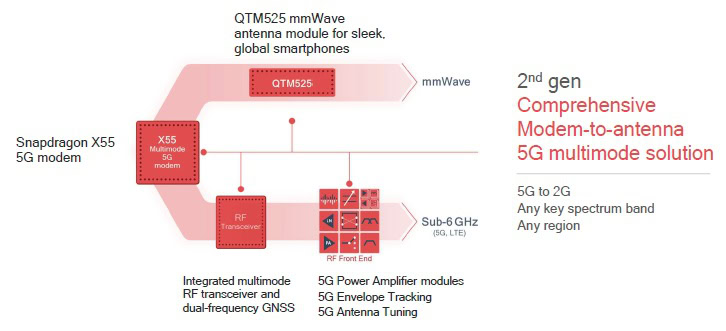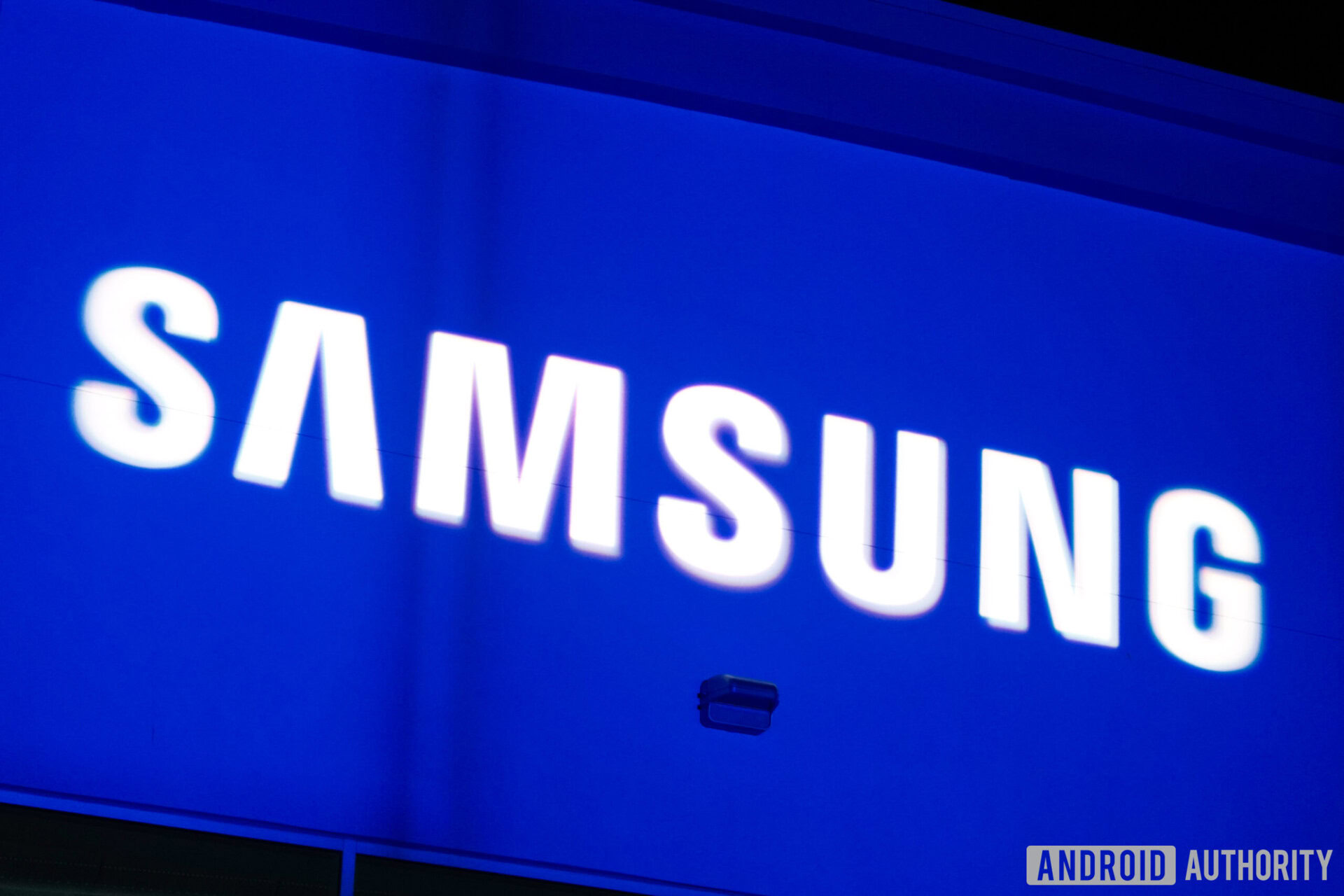Affiliate links on Android Authority may earn us a commission. Learn more.
Qualcomm wants to build everything inside your 5G phone
Published onFebruary 19, 2019

Along with its new Snapdragon X55 multi-mode 5G modem, Qualcomm has announced a slew of related technologies that will likely end up inside your 5G phone. Smartphone vendors have been buying similar radio components from rival firms, but Qualcomm is moving in on their turf – aiming to provide complete a 5G solution for manufacturers.
You see, there’s more to wireless networking than just installing a modem. A smartphone requires lots of other radio frequency (RF) front-end components. These include antenna and tuning circuits, RF transceivers, and power amplification and tracking components. Moving to 5G, the complexity and costs of the circuits increases. Qualcomm aims to cut this complexity for its partners, providing an entire RF solution under one roof.
You need lots of parts to build a 5G phone
For starters, Qualcomm has unveiled its latest mmWave antenna, the QTM525. This second generation module adds support for band n258 (26GHz) for North America, Europe and Australia on top of bands n257 (28GHz) and n260 (39GHz) and n261 (US28 GHz) which were already supported by Qualcomm’s first generation antenna. That handles the mmWave side of 5G, but networks will also consist of sub-6GHz and LTE spectrum too.

For that, Qualcomm has a selection of new RF front end components. The company is announcing the world’s first 5G 100MHz envelope tracking solution, the QET6100. Envelope tracking is an important power adjustment tool, which boosts reception depending on the strength of the connection. This is why your phone uses more power when signal strength is poor. Qualcomm states that its QET6100 achieves up to double the power efficiency when compared to average power tracking technologies.
The QAT3555 is Qualcomm’s adaptive antenna tuning solution, shrunk down into a 25-percent smaller package height. This chip is charged with switching antenna for the best possible gain and signal strength. It covers 5G spectrum ranging from 600MHz to 6GHz and is an increasingly important component type as the range and number of antennas increases.

In addition, Qualcomm has a QPM5670 4G/5G high-band power amplifier module, QPM5621 low-band power amplifier, and diversity module family under the QDM58xx name for sub-6GHz MIMO. All of these products are expected to appear in commercial devices in late 2019, roughly the same timeframe as the Snapdragon X55 5G modem.
Qualcomm: a one-stop shop for 5G hardware
Qualcomm’s value proposition to manufacturers is simple enough. They’re already likely shopping with the company for its SoCs and modems, so why not buy more components from the same partner? The added bonus is that Qualcomm can design, tune, and refine these technologies in-house, saving development time for OEMs. This could help to simplify the development of 5G devices, saving on costs versus in-house development.
Of course, Qualcomm also wouldn’t mind enticing manufacturers into its ecosystem and shutting out a few of its competitors. The company saw a 20 percent decline in chip sales and licensing fees in Q4 2018, so could do with a sales boost. Qualcomm appears to have the upper hand with 5G technology and isn’t afraid to leverage it. Eking more profit out of the race to 5G would certainly help the company’s bottom line.